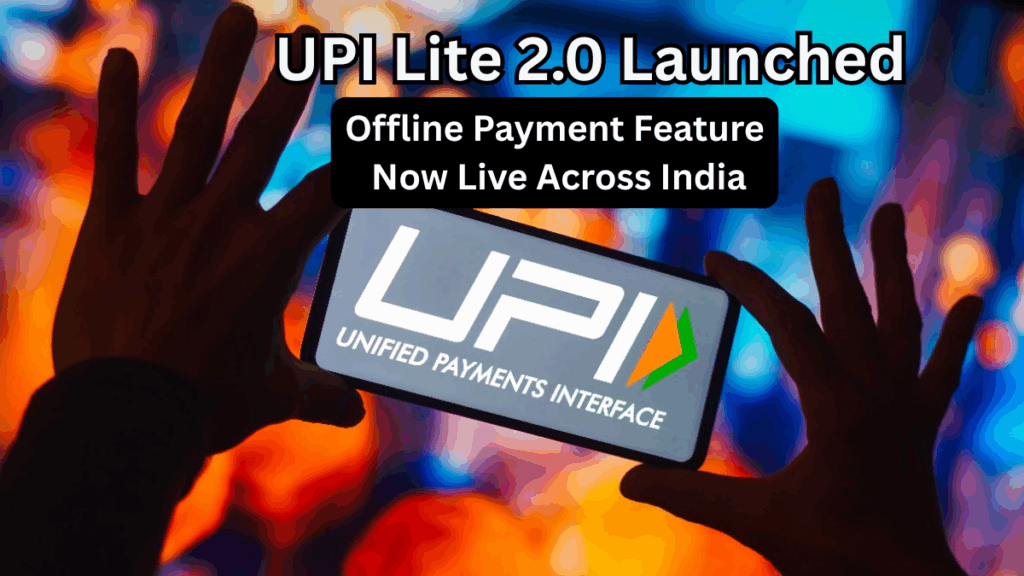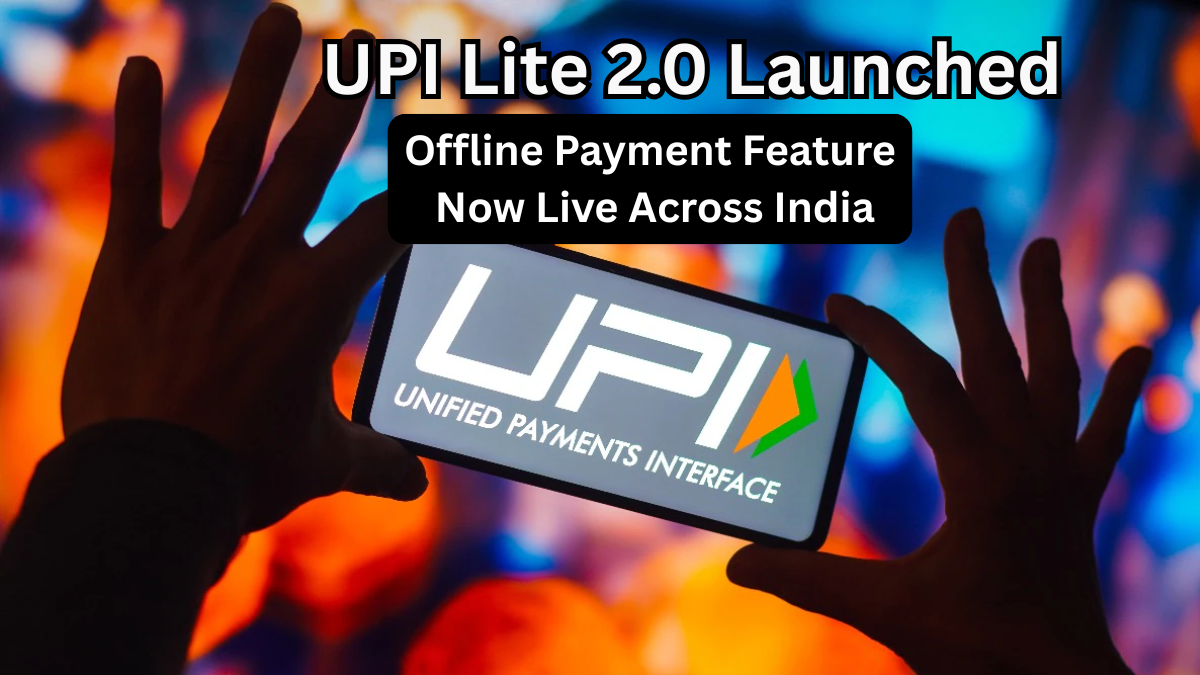In a significant stride towards enhancing digital financial inclusion, the Reserve Bank of India (RBI) and the National Payments Corporation of India (NPCI) have launched UPI Lite 2.0, a revolutionary feature that enables offline transactions. This upgrade allows users to make payments without an internet connection, catering to areas with poor connectivity and promoting seamless digital transactions nationwide.

What Is UPI Lite 2.0?
UPI Lite 2.0 is an advanced version of the Unified Payments Interface (UPI) system, designed to facilitate small-value transactions without the need for an internet connection. This feature is particularly beneficial in regions with limited or no internet access, ensuring that users can continue to make digital payments effortlessly.
Key Highlights:
-
Offline Transactions: Conduct transactions without requiring mobile data or Wi-Fi.
-
Transaction Limit: Make payments up to ₹500 per transaction.
-
Daily Limit: Users can transact up to ₹2,000 daily.
-
Supported Platforms: Available on leading UPI apps such as Google Pay, PhonePe, BHIM, and Paytm.
How UPI Lite 2.0 Works
UPI Lite 2.0 operates through an on-device wallet, allowing users to store a balance and make transactions directly from their mobile devices. This system reduces dependency on real-time bank servers, ensuring faster and more reliable payments, especially in low-connectivity areas.
Features at a Glance
| Feature | Details |
|---|---|
| Transaction Mode | Offline (no internet required) |
| Maximum Balance | ₹5,000 |
| Per Transaction Limit | ₹500 |
| Daily Transaction Limit | ₹2,000 |
| Supported Apps | Google Pay, PhonePe, BHIM, Paytm |
| KYC Requirement | Not mandatory for transactions under ₹1,000 |
Benefits of UPI Lite 2.0
-
Enhanced Accessibility: Enables digital payments in remote and rural areas with limited internet connectivity.
-
Faster Transactions: Reduces transaction time by eliminating the need for internet access.
-
User-Friendly: Simplifies the payment process, making it accessible to a broader user base.
-
Cost-Effective: Reduces the need for data usage, making it economical for users with limited internet access.
Security Measures
UPI Lite 2.0 ensures secure transactions through:
-
PIN-Free Payments: Transactions under ₹500 do not require a UPI PIN, streamlining the payment process.
-
On-Device Wallet: Balances are stored securely on the device, reducing the risk of unauthorized access.
-
Regular Updates: Continuous updates to the UPI Lite 2.0 system ensure enhanced security features.
How to Enable UPI Lite 2.0
-
Open Your UPI App: Launch the UPI-enabled application on your smartphone.
-
Navigate to Settings: Go to the ‘Settings’ or ‘Payment Methods’ section.
-
Select UPI Lite: Choose the ‘UPI Lite’ option and follow the prompts to enable the feature.
-
Set Up Wallet: Load your UPI Lite wallet with the desired amount, ensuring it does not exceed ₹5,000.
-
Start Transacting: Begin making offline transactions up to ₹500 per payment.
Frequently Asked Questions (FAQs)
1. What is UPI Lite 2.0?
UPI Lite 2.0 is an upgraded digital payment feature that allows users to make offline transactions under ₹500 without internet connectivity.
2. How do I enable UPI Lite 2.0 on my device?
To enable UPI Lite 2.0, open your UPI-enabled application, navigate to the ‘Settings’ or ‘Payment Methods’ section, select ‘UPI Lite,’ and follow the prompts to set up your wallet.
3. Is there a daily transaction limit for UPI Lite 2.0?
Yes, users can transact up to ₹2,000 daily using UPI Lite 2.0.
4. Which UPI apps support UPI Lite 2.0?
UPI Lite 2.0 is supported by leading UPI applications such as Google Pay, PhonePe, BHIM, and Paytm.
Conclusion
The UPI Lite 2.0 launch marks a significant advancement in India’s digital payment landscape, making offline payments feature more accessible and efficient. By embracing this feature, users can enjoy seamless transactions, even in areas with limited internet connectivity, contributing to the broader goal of financial inclusion across the nation.
Click here to learn more
